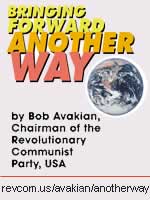
|
|||||||||||||||||||||
|
||||||||||
|
||||||||||
|
The current issue is always free to everyone If
you need the access available to a |
||||||||||
 |
||||||||||
 |
||||||||||
| The term �emerging markets� usually refers to business and commercial activity in industrializing or developing regions of the planet. It is �sometimes loosely used as a replacement for emerging economies, but really signifies a business phenomenon that is not fully described by, or constrained to, geography or economic strength,� says Wikapedia.com. I�ve never actually thought of African American and Latino communities in this country as �emerging markets� but evidently, three years ago, quite a few people did. In October 2004, the PR Newswire carried a press release that began, �Expanding upon its role as a national leader in residential finance and a leading provider of mortgage loans to African Americans, Countrywide Home Loans, Inc. has launched a new radio advertising campaign designed to appeal to the home ownership aspirations of African American families.� �The new radio campaign focuses on the perceived barriers that many African Americans and others harbor about buying a home, including common misconceptions regarding credit issues, down payment costs and other apparent obstructions to making the dream of home ownership a reality,� the release ran.
�Aimed at raising awareness and fostering Countrywide as the lender of choice among African American consumers, the ads feature Countrywide�s innovative products, including its new Optimum LoanSM, which offers low down payment options, relaxed credit guidelines and allows for multiple income sources to facilitate more approvals,� said Countrywide. �We want the African American community to know that with the multitude of Countrywide mortgage programs to fit a variety of financial situations, the dream of home ownership is truly within reach for many who may think otherwise,� remarks Rodolfo Saenz, executive vice president of Emerging Markets for Countrywide. Saenz said the radio ads �should appeal to African Americans� strong sense of community and neighborhood ties as they will highlight Countrywide�s local experts who work in the community and who have the ability to ensure fast, easy approvals and better overall service.� That same month, Angelo Mozilo, Countrywide chair and CEO, addressed the 4th Annual Hispanic Marketing Convention and Expo in Denver. A release about the event noted that �Under his leadership, Countrywide has led the industry in its service to Hispanic home buyers by introducing innovative products and programs that are geared to first-time, low- to moderate-income and minority home buyers.� �More than a decade ago, Mozilo formalized the company�s commitment to affordable lending when it launched House America, an initiative to provide increased home ownership opportunities for all Americans,� the announcement said. �More recently, the company announced The Optimum LoanSM Program, a mortgage product that is specifically tailored to non-traditional home buyers who do not have the credit history or debt-to-income ratios of typical borrowers; and a Spanish-language national TV and radio ad campaign that is directed at the home ownership aspirations of Latinos.� According to Countrywide material, the Optimum Loan(SM) program is �specifically designed to assist the many creditworthy individuals who have little or no funds for down payments and closing costs - one of the biggest obstacles to home ownership. The program requires a cash contribution of the lesser of one percent of the home's sale price or $500. The program includes flexible underwriting guidelines that consider non-traditional credit, income and asset sources.�
Now it is being suggested that the 2004 decision by Countrywide and other mortgage lenders to step up their drive to lure African American, Latino and other minority communities into the world of risky �subprime� and other innovative mortgage schemes was directly due to a shift in government policy. Early that year, then Federal Reserve Chair Alan Greenspan observed that the country �might benefit if lenders provided greater mortgage product alternatives to the traditional fixed-rate mortgage.� �And guess what happened: Wall Street did just that, used the green light of the Fed Chairman to go after the few sectors of the American population they still did not have as customers, coincidentally, those who have been historically excluded from the American dream,� noted the blogger The Bankruptcy News a couple of weeks ago. In the spring of 2005, Greenspan announced: �Where once more marginal applicants would simply have been denied credit, lenders are now able to quite efficiently judge the risk posed by individual applicants and to price that risk appropriately. These improvements have led to rapid growth in subprime mortgage lending� and �fostering constructive innovation that is both responsive to market demand and beneficial to consumers.� On Oct. 13, 2004, the Countrywide PR department announced: �As a result of its ongoing effort to increase home ownership in low-income and minority communities, Countrywide Home Loans, Inc., a national leader in residential finance, today announced it has become the nation's leading mortgage lender to emerging markets communities, which include African American, Hispanic, Asian/Pacific Islander and American Indian/Alaskan Native homeowners.� Countrywide played a major role in a national program called With Ownership,Wealth (WOW) for increasing African-American home ownership, joined forces with the Congressional Black Caucus Foundation to contribute to the mutual goal of �creating one million additional African-American homeowners by 2005.� According to the company, it features outreach programs such as home ownership fairs and seminars, credit counseling and educational resources addressing down-payment and closing-costs assistance programs and participates in educational events for potential homeowners in some Congressional Black Caucus districts attended by Caucus members. The meetings are attended by members of the Congressional Black Caucus. The company also works with and helps fund New York-based Asian Americans for Equality (AAFE). As of now, Countrywide hasn�t gone belly-up as have so many mortgage lenders but industry insiders aren�t giving any assurances that it will not (or that it won�t be bought up). In July, Bank of America bought a stake in the company for $2 billion and Countrywide secured a $11.5 billion line of credit.
On Sept. 10, Mozilo addressed an investment conference hosted by Bank of America in San Francisco. He welcomed the recent decision of the Federal Reserve to cut interest rates saying, �It is imperative that liquidity return to the mortgage market, and that the tide be turned in order to stabilize home prices.� A failure to do so will not only imperil the financial lives of hard-working American families, but will inevitably impact our broader economy." As of the end of June, he revealed, 20 percent of his company�s loans were delinquent and something less that 4 percent were in some stage of foreclosure.� He didn�t say what part of the 20 percent were in minority communities but given the company�s leading position this �emerging market,� it would seem safe to assume it�s quite bit. In 2003, Countrywide accounted for 27.3 percent of all home loans made to Native Americans. Countrywide is, of course, not the only mortgage company that leaped into the African American, Latino, Asian and Native American �emerging market.� They all did. And now the chickens are coming home to roost. Home foreclosures across the country soared 36 percent between July and August (243,947 as opposed to 179,599). That�s one filing for every 510 households. And it�s expected to get worse. According to RealtyTrac, the highest foreclosures rates were in Nevada (one for every 165 households), California (one for every 224) and Florida (one for every 243). The top 10 also included Georgia, Ohio, Michigan, Arizona, Colorado, Texas and Indiana. The effect of the foreclosure epidemic is not restricted to the Sunbelt or the rustbelt, or the South, however. �What is happening to the African-American community in central Brooklyn isn�t called genocide or ethnic cleansing, but when you put it all together, it appears more malevolent than not,� wrote David Mark Greaves in Our Times Press, Sept. 22. �One of the elements now coming to the fore is the Category 5 foreclosure hurricane bearing down on central Brooklyn, or rather, on the African-American population in central Brooklyn. Because what is particularly of note about this hurricane, is that it, like Katrina, is race-specific for the worst of its wrath, this according to testimony given at the Senate Democratic Conference Public Hearing on Subprime Lending Practices in New York, convened by State Senator Velmanette Montgomery and held at Bedford-Stuyvesant Restoration earlier this month.� As of Sept. 18, over 10,000 Brooklyn homes were in pre-foreclosure, with another 1,300 headed to auction. For Queens the figures were 1,121 new filings in August and some 9,400 homes in pre-foreclosure. According to the Urban League, African-American home ownership reached its historical peak at nearly 50 percent in 2004 only to slip to a little over 47 percent in 2006, largely do to foreclosures. The still largely untold story is the devastation this housing market collapse is having not just on mostly working class individuals and families but on the whole of the African American community.
�Housing Crisis Reduces African American Wealth�
read a headline over a Sept. 6 Pittsburgh Courier commentary
by Judge Greg Mathis, a national vice president of Rainbow PUSH
and a national board member of the Southern Christian Leadership
Conference. �At first, these loans seemed like a dream come
true. Those who previously thought they couldn�t buy a home
were now struggling to sustain the high-interest loans they
originally believed were the answers to their prayers.� �More of our families � African American families,
hardworking families - are falling prey to loans that were never
any good,� continued Mathis. �These predatory lending practices
are chipping at the hard-earned wealth our people are building.
If the sub prime lending industry is not regulated quickly,
the wealth gap between whites and African Americans will only
grow and the economic development of the African American community
will be set back several decades. It�s amazing how little the financial experts who have for years lectured us on the glories of the �market economy� seem to understand how it works. When the news began to seep out last year that a crisis was brewing in the subprime mortgage market, its possible effects were minimized. When it became obvious that the situation was serious, that millions of people were, indeed, in danger of losing their homes, the idea that the development carried a threat to the economy was belittled. Now that the �credit crunch� has engendered a full scale economic disruption, not just in this country but throughout the capitalist world, we are being reassured that a little manipulation of interest rates by the bishops that oversee the system will probably make it all go away. In October 2005, before he was selected to replace Greenspan, the current Fed chair Ben Bernanke told Congress he did not think there was a housing �bubble� and that even though house prices were �unlikely to continue rising at current rates" still �moderate cooling in the housing market, should one occur, would not be inconsistent with the economy continuing to grow at or near its potential next year." A few days later, Joseph E. Stiglitz,
a Nobel laureate in economics and professor of Economics at
Columbia University, criticized Greenspan�s support for the
Bush Administration�s tax cut. The problem, he wrote, was not
only its size �but also in its design; by directing the cuts
at upper-income Americans, it provided little economic stimulus.
�But soaring deficits did not return the economy
to full employment, so the Fed did what it had to do � cut interest
rates. Lower interest rates worked, but not so much because
they boosted investment, but because they led households to
refinance their mortgages, and fueled a bubble in housing prices. �The median price of American homes is expected to fall this year for the first time since federal agencies began keeping records after the Second World War, according to an FT/Thomson Financial poll,� reported the Financial Times Aug. 30. �Economists said continuing turmoil in financial markets had significantly worsened their outlook and that they now expected a drop in the value of homes in each of the next three years, in what would be the worst downturn for house prices since the government began keeping records.� ��To have a house of your own is the essence of the American Dream,� John Authers wrote in the Financial Times Aug. 29. �The problem is that that dream shows signs of turning into a nightmare. And all of the world now shares it.� ��Following Monday's news that the overhang of unsold apartments in condominiums and co-operatives is now equivalent to a year's worth of supply, the message was clear: US housing could still get worse,� wrote Authers. �Publication of minutes for the Federal Open Markets Committee's meeting this month, showing that Fed governors thought the housing slump would be �deeper and more prolonged� than earlier expected, confirmed the gloom.� �I will not analyze here the validity, importance or wisdom of owning a home, but it should suffice to say that in American culture, home ownership is a desirable trait,� wrote the The Bankruptcy News blogger. True, but I remain a skeptic when it comes to the notion that putting everybody into an individual house or condo is a valid or justifiable goal of social policy. The more this crisis unfolds the more it looks like the boom in the market and the tragic aftermath resulted more from financial policy that anything else. Greenspan even gives it an ideological or political angle. �I believed then, as now, that the benefits of broadened home ownership are worth the risk. Protection of property rights, so critical to a market economy, requires a critical mass of owners to sustain political support,� he now says. As the crisis and the doom deepen, a few million people and their friends, families and communities might start to lag in their enthusiasm for such a system. BlackCommentator.com Editorial Board member Carl Bloice is a writer in San Francisco, a member of the National Coordinating Committee of the Committees of Correspondence for Democracy and Socialism and formerly worked for a healthcare union. Click here to contact Mr. Bloice. |
||||||||||
| September
27, 2007 Issue 246 |
|
| Printer Friendly Version in resizeable plain text format format |
 |
 |
 |
| |
| |





































